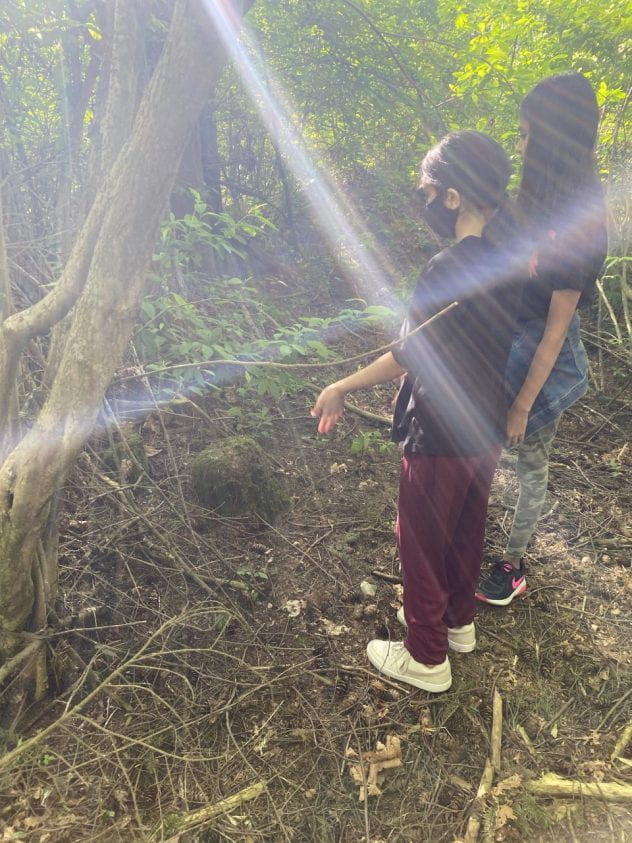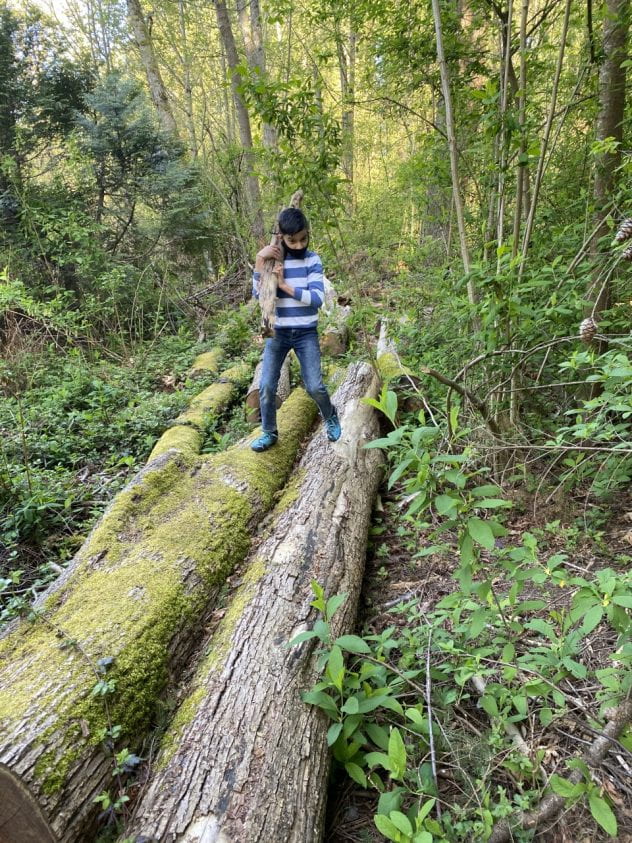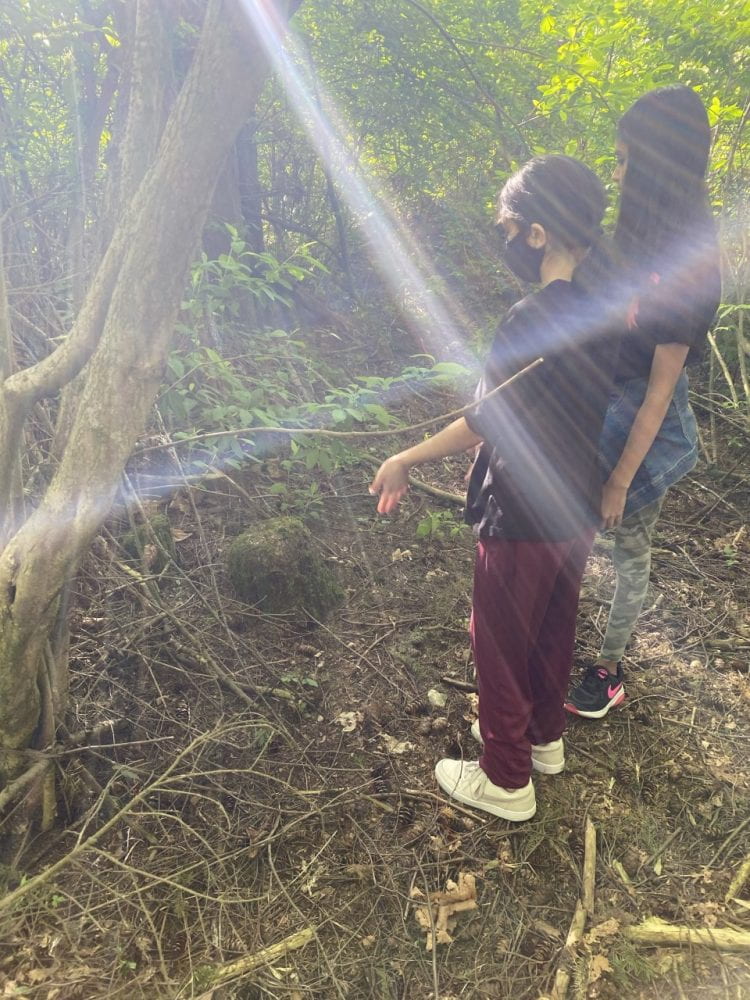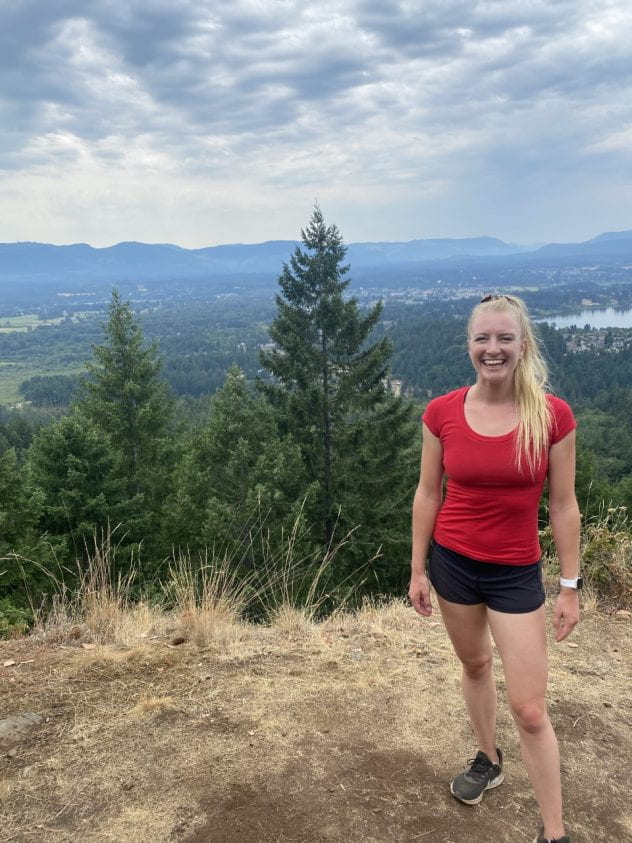By Alyssa Dixon (MEd in Imaginative Education, Teacher with Surrey School District)
When I was little and would run my fingers over the grass or marvel at the song of a bird I never felt separate or other. As I grew and became entrenched in society, walls (figuratively and literally) began to spring up between myself and the natural world. Walls that made me feel like there was an ‘us’ and ‘them’; an illusion of otherness.
However, it wasn’t until I learned about Imaginative Ecological Education and began to really look at my personal relationship with the natural world that I realized how this illusion of otherness was affecting my ability to deeply, emotionally connect with the natural world. I felt ‘without’ instead of ‘within’. Although I did daily actions to care for the natural world, I must (vulnerably) say that many of them were on a superficial level because I didn’t truly recognize my interconnectedness. Through reading, reflecting and conversations, I began to shift my own understandings and perspectives and worked to listen to the voices of the natural world that had been muted in my story.
My personal reflection led me to ask how the use of cognitive tools can support students in developing a deep, emotional connection with nature that will help dissolve feelings of otherness and separation from the natural world. The action research project ‘Unzipping the Jacket: Using Cognitive Tools to Dissolve Feelings of Otherness Between Students and the Natural World’ is the story of my experiences inviting myself and my students to discover our unique and meaningful relationships with the natural world. I share so that others can hopefully be inspired by the students’ willingness and openness to interact with the beings of our local forest park, Hazelnut Meadows. Through anecdotal notes of observations, focus group interviews and student reflection, a beautiful narrative of empathy and hope is woven. Through an analysis of our class experiences in Hazelnut Meadows Forest three inter-connected themes emerged: how Imaginative Ecological Education supports student engagement, dissolves feelings of otherness between students and the natural world, and supports nature as co-teacher.
 I asked my students to come with me, to open their hearts, to listen and dissolve the illusion of separating walls and they did! Outstretched fingertips reached for beams of sunlight that were reflected in their smiles as they stood amazed at the beauty of the light filtering through the shades of green. An ear pressed up against a tall fir; listening for his stories of heartache and soaking up his years of wisdom. As they got to know the natural world they could more deeply imagine and understand their place ‘within’. They began to greet the natural world as their teacher which is a recognition of the reciprocal and ever-joining relationship between them. When I asked my students what the natural world has taught them, there was a sense that they understand the role that our natural world plays in shaping who each of us will become. The depth of their responses about how nature teaches them patience, bravery and creativity is evidence of their openness in valuing nature as a vital piece of who they are and who they want to be.
I asked my students to come with me, to open their hearts, to listen and dissolve the illusion of separating walls and they did! Outstretched fingertips reached for beams of sunlight that were reflected in their smiles as they stood amazed at the beauty of the light filtering through the shades of green. An ear pressed up against a tall fir; listening for his stories of heartache and soaking up his years of wisdom. As they got to know the natural world they could more deeply imagine and understand their place ‘within’. They began to greet the natural world as their teacher which is a recognition of the reciprocal and ever-joining relationship between them. When I asked my students what the natural world has taught them, there was a sense that they understand the role that our natural world plays in shaping who each of us will become. The depth of their responses about how nature teaches them patience, bravery and creativity is evidence of their openness in valuing nature as a vital piece of who they are and who they want to be.
I believe that one of my greatest responsibilities as an imaginative educator is fostering this emotional relationship between my students and the other-than-human-world.
It is heavy to say but I believe that the future of our planet rests on an emotionally strong relationship forming between all of us. My wish is that we can imagine so that we can learn, empathize, understand and step fully into our role as members of this ecosystem. An ecosystem that is on the verge of destruction but can be brought into balance if we can re-imagine a world where we can all live harmoniously. A world where we do not mute but listen.
The more we know; the more we can imagine.
When we dissolve the walls of otherness, we open the gates to a new flood of knowledge and experiences that support this re-imagining of our world.  At times, the un-muting has been painful and it seems easier to retreat into the silence but then I remember that our present world has been imagined into being and therefore this new knowledge and understanding can allow me, my students and hopefully all of us to imagine a world where care for all beings is at the center. It is the imagination that has created this illusion of otherness between humans and the natural world and therefore, it is the imagination that can dissolve the illusion of otherness.
At times, the un-muting has been painful and it seems easier to retreat into the silence but then I remember that our present world has been imagined into being and therefore this new knowledge and understanding can allow me, my students and hopefully all of us to imagine a world where care for all beings is at the center. It is the imagination that has created this illusion of otherness between humans and the natural world and therefore, it is the imagination that can dissolve the illusion of otherness.
As I continue on my personal and professional journey, I try to lead with optimism; a lesson that I have been generously gifted from the other than human world through the song of a baby bird, a bush full of blackberries, the earth soaked with life-giving rain. There will always be hope, just keep remembering to imagine it.
If you would like to learn more about these experiences and ideas, please dive into my research project! I hope that it leaves you inspired. I am very open to questions and discussions!



This is an amazing read Alyssa. It reminds us that we need to reach outside of ourselves and connect with the beauty that surrounds us. Thank you.